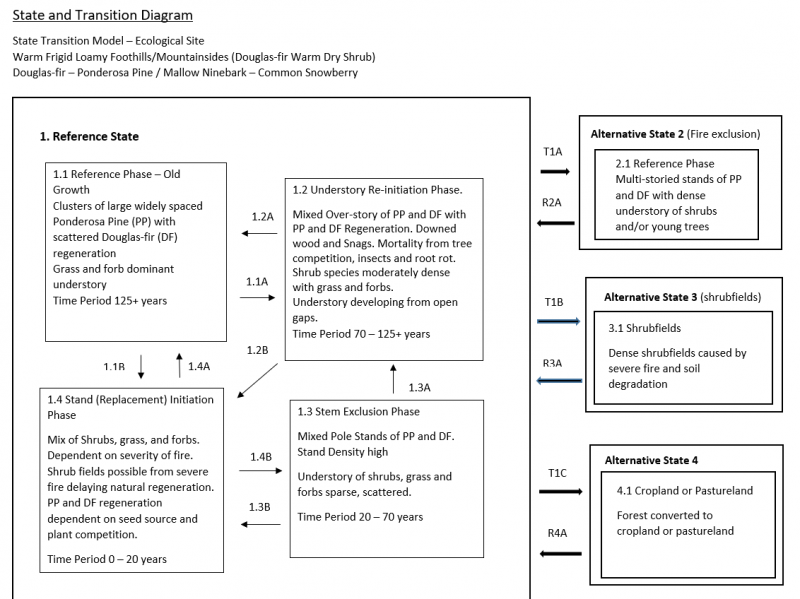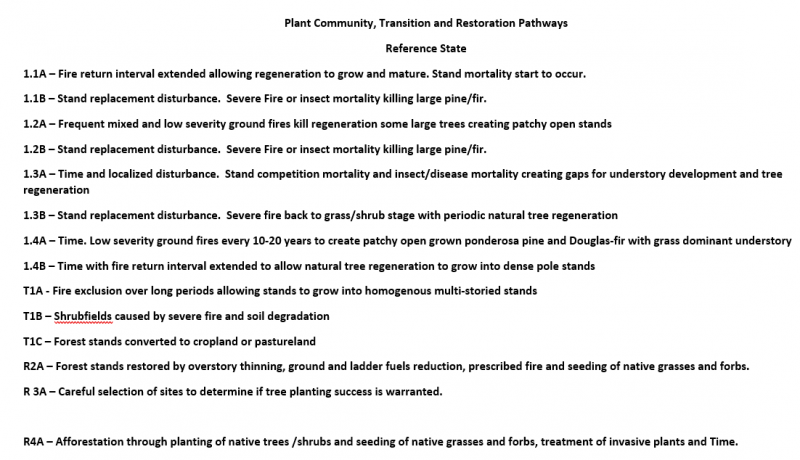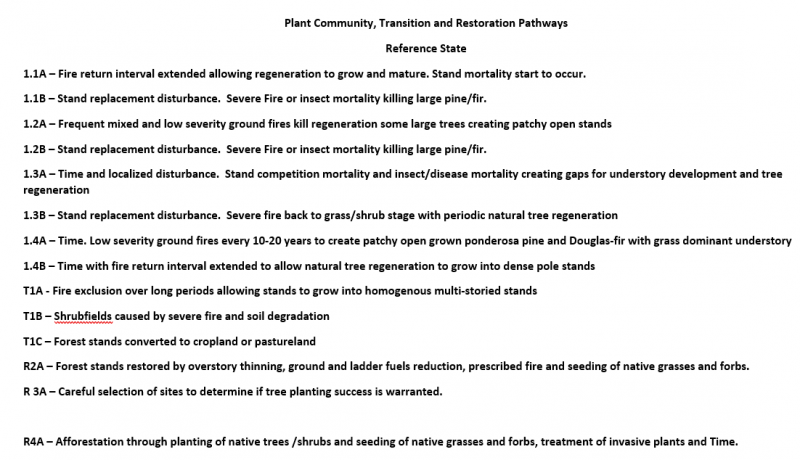
Natural Resources
Conservation Service
Ecological site F043AY585WA
Warm-Frigid, Xeric, Sandy, Outwash Terraces (Douglas-fir Warm Dry Shrub)
Last updated: 10/14/2020
Accessed: 12/20/2025
General information
Provisional. A provisional ecological site description has undergone quality control and quality assurance review. It contains a working state and transition model and enough information to identify the ecological site.
MLRA notes
Major Land Resource Area (MLRA): 043A–Northern Rocky Mountains
Major Land Resource Area (MLRA): 043A–Northern Rocky Mountains
Description of MLRAs can be found in: United States Department of Agriculture, Natural Resources Conservation Service. 2006. Land Resource Regions and Major Land Resource Areas of the United States, the Caribbean, and the Pacific Basin. U.S. Department of Agriculture Handbook 296.
LRU notes
Most commonly found in LRU 43A01 (Okanogan Plateau). Also found in adjacent areas of 43A02, 44A01 and 44A02.
Classification relationships
Relationship to Other Established Classifications:
United States National Vegetation Classification (2008) - A3392 Douglas fir- P. Pine / Shrub Understory Central Rocky Mt. Forest & Woodland Alliance
Washington Natural Heritage Program. Ecosystems of Washington State, A Guide to Identification, Rocchio and Crawford, 2015 - Northern Rocky Mt. Dry-Mesic Montane Mixed Conifer Forest (D. Fir – Pine)
Description of Ecoregions of the United States, USFS PN # 1391, 1995 - M333 Northern Rocky Mt. Forest-Steppe-Coniferous Forest-Alpine Meadow Province
Level III and IV Ecoregions of WA, US EPA, June 2010 - 15x Okanogan Highland Dry Forest. 15w Western Selkirk Maritime Forest. 15r Okanogan – Colville Xeric Valleys & Foothills.
This ecological site includes the following USDA Forest Service Plant Associations: PSME/PHMA, PSME/PHMA-LIBOL and PSME/SYAL (Douglas-fir Series). (Williams et. al. 1995)
Ecological site concept
These soils have developed in mixed Mazama tephra, and loess over sandy outwash. The soils are very deep and have low available water capacity to a depth of 1 m. The soils are mostly somewhat excessively drained. They do not have a water table within 30 inches of the surface during Apr-Oct.

Figure 1.

Figure 2.
Table 1. Dominant plant species
| Tree |
(1) Pseudotsuga menziesii var. glauca |
|---|---|
| Shrub |
(1) Symphoricarpos albus |
| Herbaceous |
(1) Calamagrostis rubescens |
Click on box and path labels to scroll to the respective text.

